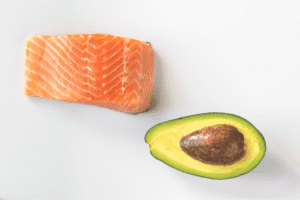Cholesterol
What is it? If mine is high what can I do about it?
What is cholesterol? Cholesterol is a waxy substance. It’s not inherently “bad.” Your body needs it to build cells and make vitamins and other hormones. But too much cholesterol can pose a problem.
Cholesterol comes from two sources. Your liver makes all the cholesterol you need. The remainder of the cholesterol in your body comes from foods
What is up with HDL & LDL
These are two types of lipoproteins that carry cholesterol to and from cells. One is low-density lipoprotein, or LDL. The other is high-density lipoprotein, or HDL. A test measures the amount of each type of cholesterol in your blood.
HDL known as the “good” cholesterol, helps rid your body of excess cholesterol by absorbing it and carries it back to the liver where it can be removed from your bloodstream
LDL is called “bad cholesterol” because it takes cholesterol to your arteries, where it may collect in artery walls, too much cholesterol in your arteries may lead to a buildup of plaque.
Remember which is good:
H= Healthy
L = Low (Keep it low)
Cholesterol Fun Facts:
You can’t live without cholesterol. We’re born with cholesterol in our bodies, and infants get more from their mother’s milk; in fact, cholesterol is even added to baby formula. Cholesterol is essential because all of our hormones and cells need it to function properly. It’s also a building block for all of the body’s cells, and it helps the liver make acids that are required to process fat. Cholesterol is a type of lipid, just as fats are.
Sweating can raise your good cholesterol levels. Aside from eating a healthy diet, including foods like heart-healthy salmon and avocado, you can raise your HDL levels by working out.
An eye exam can detect High Cholesterol – People with high cholesterol sometimes have either a blue or yellow ring located around their cornea.
Where does high cholesterol come from?
High levels of cholesterol in your blood can be from genetics as mentioned previously, but also from eating foods high in saturated fats and trans-fats, ESPECIALLY IN COMBINATIONS WITH HIGHLY PROCESSED CARBOHYDRATES. (Think canned biscuits, pastries and other frozen baked goods) – It is not to say that you can NEVER have these things but how often are you consuming them and how much are you enjoying in a sitting?
Another major contributor is not including foods with unsaturated fats and with lots of fiber in your daily diet.
Where are Saturated Fats found?
Fried foods
Pizza especially frozen
Frozen baked goods like rolls pies and pastas
Potato or tortilla chips or other fried bagged snacks
Processed sausages also
Butter and coconut oil.
Butter and coconut oil are fine and can be a healthy cooking option however everything is in balance. Too much even of a good thing is still TOO MUCH! The dose is the poison.
Eat more unsaturated fats like:
Eat fish rich in omega-3 fatty acids, such as salmon, mackerel, anchovies, herring and sardines or take a quality fish oil supplement regularly.
Choose lean meat and skinless poultry.
Trim visible fat from meat. Remove fat and skin from poultry.
Limit processed foods, which often contain saturated fat. Instead, reach for whole food full of fiber like fruits and vegetables when you’re hungry.
I know we mention fiber a lot but fiber can help lower cholesterol by binding to it in the small intestine. Once fiber is inside the small intestine, the fiber attaches to the cholesterol particles, preventing them from entering your bloodstream and traveling to other parts of the body.
Just as a reminder some High fiber foods are Peas, beans, avocado, fruits, veggies, whole grains, nuts, oatmeal, lentils, chia seeds, flax seeds, sweet potatoes
Include more high fiber foods in your diet.
Main thing to remember is that it is 99% within your power to control cholesterol with your diet. Genetics are not the major contributing factor to you having high cholesterol. Your diet is!!!
Recognize that and decide to make changes to get it lower and kick that medication to the curb for good!
Lately we’ve been on ramping several clients with a goal of lowering their cholesterol.
It’s lead us to want to help everyone to understand this aspect of our health better!
Learn anything new from these slides?
How is your cholesterol?

Be the first to comment